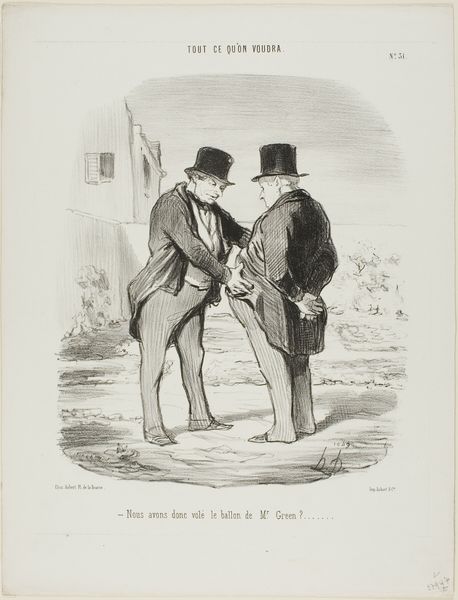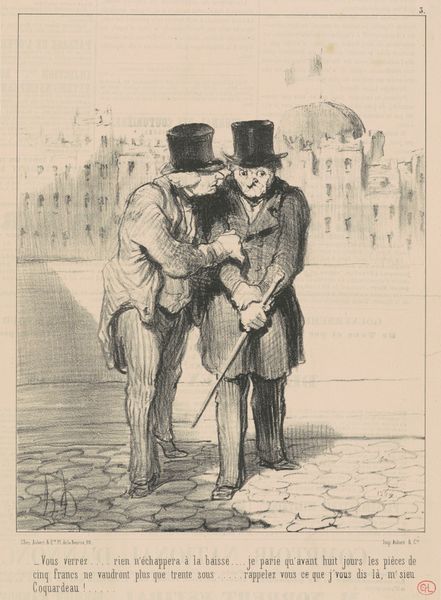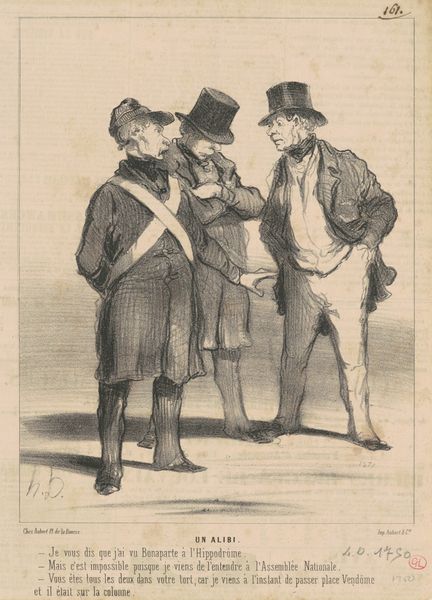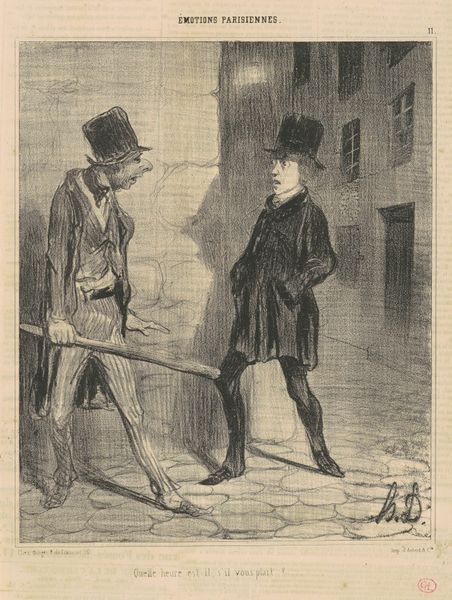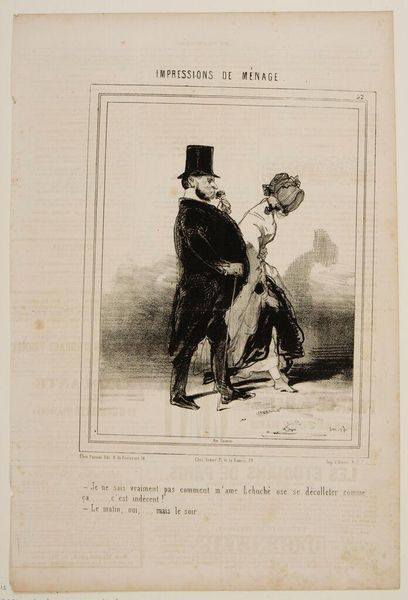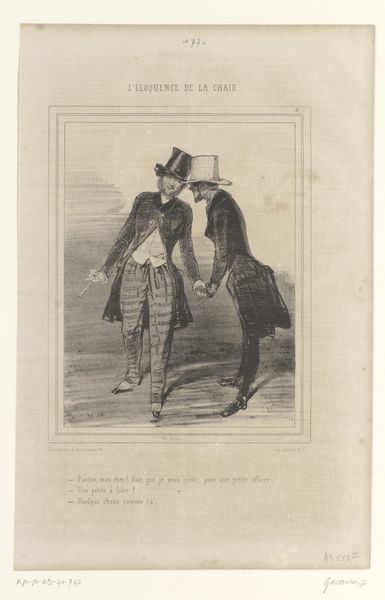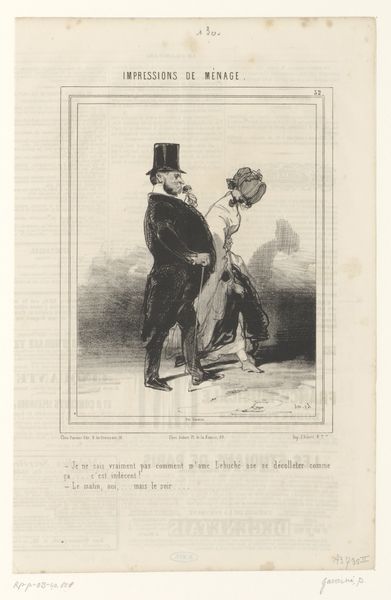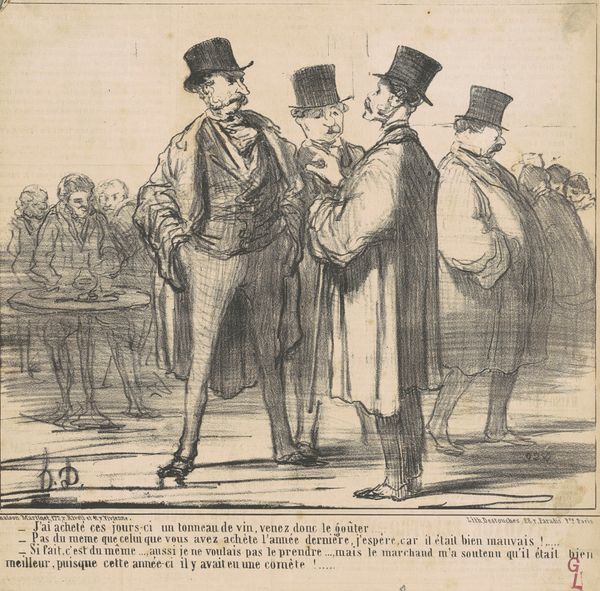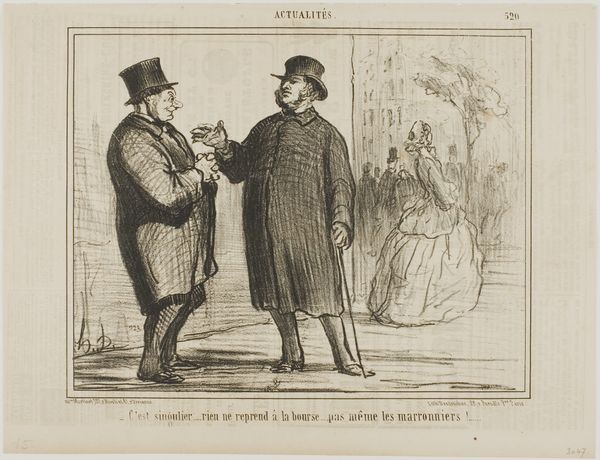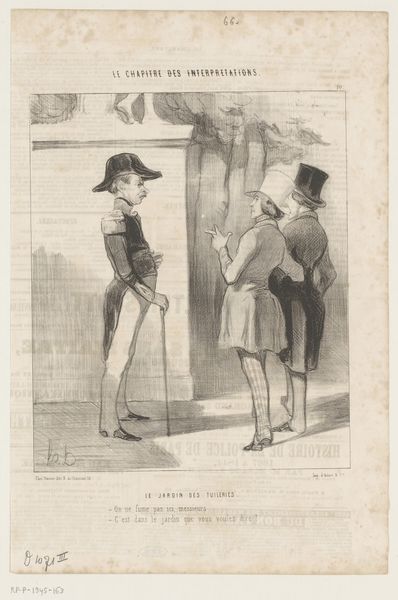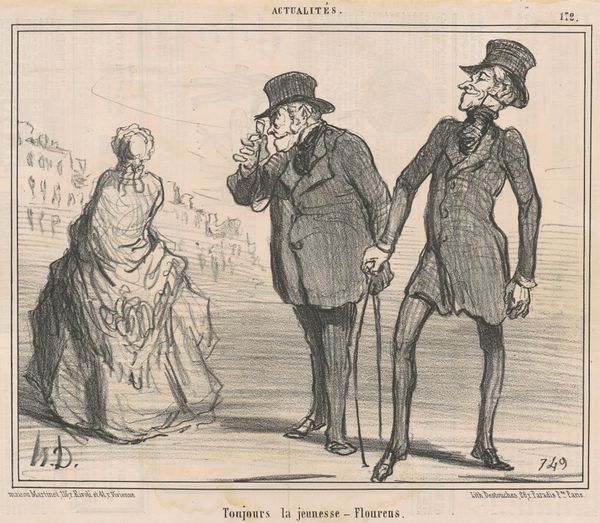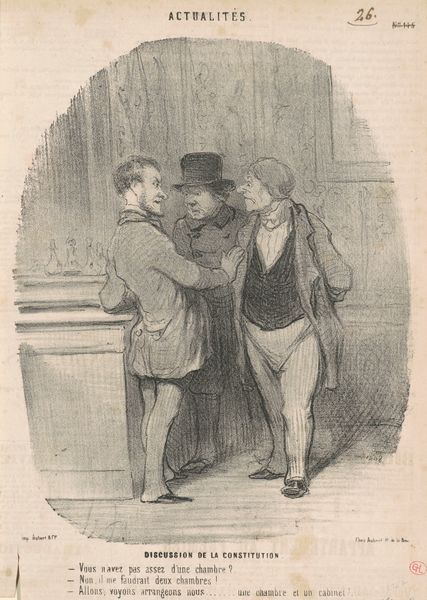
"- Can you see the comet?... just there, at the tip of my finger ... don't lose sight of my finger tip!," plate 5 from La Comète De 1857 1857
0:00
0:00
Dimensions: 211 × 241 mm (image); 253 × 359 mm (sheet)
Copyright: Public Domain
Curator: Honoré Daumier’s lithograph from 1857, a print on paper, presents us with an intriguing interplay of social observation and graphic technique. The work, titled "- Can you see the comet?... just there, at the tip of my finger ... don't lose sight of my finger tip!," plate 5 from La Comète De 1857 depicts two men gazing upwards. What strikes you initially? Editor: It has a darkly comedic air. The almost frantic gesture of the pointing man against the seeming disinterest or perhaps incomprehension of the other really emphasizes a kind of social divide. I also notice the rich cross-hatching, giving it textural complexity. Curator: The contrast you observe is crucial. Daumier’s mastery of lithography allowed for incredibly detailed gradations, evident in the textures of their clothing and the somber cityscape, really creating depth and atmosphere through a range of tones. I would agree there is tension but how might you define its social source? Editor: I’d say that's embedded within its very materiality. Lithography, as a readily reproducible medium, was intrinsically tied to democratized visual culture in France at the time, facilitating satire and social commentary on class structures, that reach broad audiences in papers or as prints, with that in mind what sort of critique could be being developed in terms of the comet itself and not merely who is pointing to it? Curator: Excellent question! Comets were often seen as portents of change, political and social upheavals, perhaps that social gap comes in as it relates to being able to percieve such a significant cosmic event or their individual responses towards these monumental change that affect their position, or at least challenge its security. Editor: Exactly. This work serves both as aesthetic expression and record, engaging with the societal currents and offering layers of historical analysis within a single frame. Curator: Daumier truly demonstrates the capacity for such simple prints, the labour of the process is invisibalised through this highly affective and potent message to the future.
Comments
No comments
Be the first to comment and join the conversation on the ultimate creative platform.
